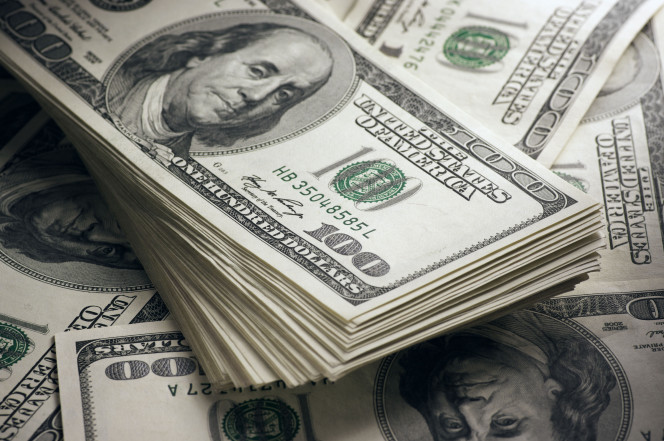The dollar, on Monday, January 29, surged from lows, but struggled to pull ahead from six straight weeks of losses on its evaporating yield advantage and doubts about Washington’s commitment to a strong currency.
The dollar index against a basket of six major currencies rose 0.2 percent to 89.215, extending its rebound from 88.429, a three-year nadir set on Thursday.
The currency was marginally helped by U.S. GDP data on Friday, which showed strong domestic consumption and capital spending even though the headline figure was weaker than expected due to a rise in imports.
Yet traders expect more headwinds for the dollar, which has been pummelled by renewed worries that President Donald Trump may use currency policy as a tool to press other countries to get better “deals” on trade.
The greenback is also losing its relative yield attraction for investors. Short-term interest rates are expected to rise in other countries as the European Central Bank and many others start to scale back their easy monetary policy.
U.S. equities have one of the most expensive valuations in the world, prompting investors to look for better bargains elsewhere.
Against the yen, the dollar eked out 0.1 percent gain to trade at 108.72 yen, after hitting a low of 108.28 yen on Friday, its lowest level since mid-September.
Comments from Bank of Japan Governor Haruhiko Kuroda in Davos on Friday that the central bank is finally close to the inflation target sparked expectation of an exit from its massive stimulus.
The yen later pared gains after a BOJ spokesman said Kuroda was merely repeating the central bank’s official view.
Yet, it showed how sensitive the market is to any slightest hint that the BOJ is on the cusp of unwinding its stimulus.
The euro traded at $1.2400, down 0.2 percent and off its three- year peak of $1.2538 touched on Thursday.
Its failure over the past couple of days to stay above $1.25 is seen by some traders as a sign of fatigue in its six-week old rally.
Data from U.S. financial watchdog Commodity Futures Trading Commission showed speculators’ net long position in the euro/dollar futures traded in Chicago rose to a record high, suggesting that profit-taking could be on the cards.
The Australian dollar held firm at $0.8109 after hitting a 20-month peak of $0.8136 on Friday.
The Chinese yuan gained 0.2 percent to 6.3157 per dollar, near Thursday’s 6.2968, which was its strongest since August 2015, when Beijing effectively devalued the yuan suddenly.
The yuan is on course for its biggest monthly gain in January, seen by traders as Beijing’s counter-move to deflect any criticisms that China is gaining unfair trade advantage with a cheaper currency, Reuters reports.













